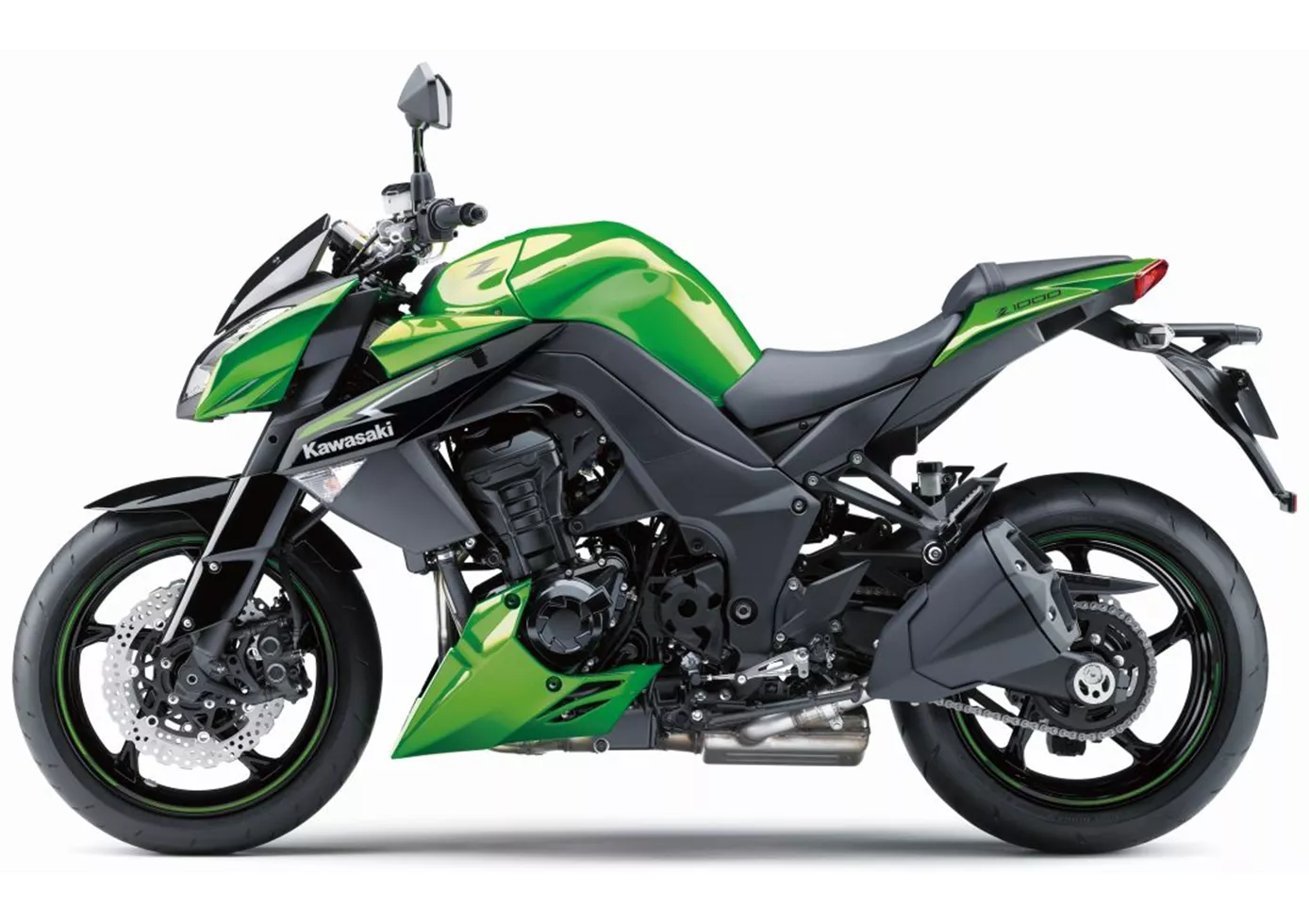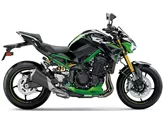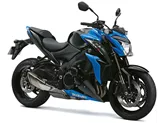Kawasaki Z 800 2013 vs. Kawasaki Z1000 2013

Kawasaki Z 800 2013

Kawasaki Z1000 2013
Overview - Kawasaki Z 800 2013 vs Kawasaki Z1000 2013
The Kawasaki Z 800 and the Kawasaki Z1000, both from the 2013 model year, are naked bikes with similar engine types, cooling systems, and cylinder configurations. However, there are several notable differences between the two models.
In terms of engine power, the Z1000 outperforms the Z800 with 138 HP compared to 113 HP. The Z1000 also has a higher torque rating of 110 Nm, while the Z800 has a torque of 83 Nm. This means that the Z1000 offers more power and better acceleration, making it a more suitable choice for riders looking for a thrilling riding experience.
The suspension systems of both bikes are similar, with upside-down telescopic forks at the front. However, the Z1000 offers more adjustability options with compression, preload, and rebound adjustments, while the Z800 only has rebound adjustments. This gives riders more control over the Z1000's suspension, allowing for a more personalized riding experience.

Kawasaki Z 800 2013
In terms of chassis, the Z800 features a steel frame, while the Z1000 has an aluminum frame. The aluminum frame of the Z1000 offers better rigidity and lighter weight, contributing to improved handling and maneuverability.
Both bikes have double disk brakes at the front with four pistons, providing powerful and reliable braking performance. However, the Z1000 has the additional feature of radial technology, which enhances braking efficiency and control.
In terms of dimensions and weights, the Z800 has a slightly wider front tire width of 120 mm compared to the Z1000's 120 mm. The Z1000, on the other hand, has a wider rear tire width of 190 mm compared to the Z800's 180 mm. The Z800 has a slightly higher seat height of 834 mm compared to the Z1000's 815 mm. Additionally, the Z800 has a higher kerb weight of 229 kg compared to the Z1000's 221 kg. Both bikes have a fuel tank capacity of 15 liters.
In terms of strengths, the Z800 has an eye-catching, chunky look that appeals to many riders. It also offers confident acceleration and has a relaxed geometry, making it suitable for both city riding and long-distance touring. The Z800 also boasts powerful brakes, ensuring reliable stopping power in any situation.

Kawasaki Z1000 2013
The Z1000, on the other hand, has a powerful engine that delivers exhilarating performance. It also produces a rich sound that adds to the overall riding experience. The Z1000's unique design sets it apart from other naked bikes on the market, making it a standout choice for riders looking for a bike that turns heads.
In terms of weaknesses, the Z800 has limited freedom of movement for the legs, which may be uncomfortable for taller riders. The Z1000 lacks traction control, which can be a disadvantage in certain riding conditions. Additionally, the Z1000's chassis has been described as nervous, which may affect stability and handling at high speeds.
In conclusion, while both the Kawasaki Z 800 and the Kawasaki Z1000 have their own strengths and weaknesses, the Z1000 offers more power, better adjustability, and a unique design compared to the Z800. However, riders should consider their own preferences and riding style when choosing between the two models.
Technical Specifications Kawasaki Z 800 2013 compared to Kawasaki Z1000 2013
Pros and Cons in comparison
Pros and Cons in comparison
Kawasaki Z 800 2013

Overall, the Z800 delivered a sensational performance. Considering the fact that nothing was changed or optimised on the vehicle apart from the Remus rear silencer, a super final result.
Kawasaki Z1000 2013

All in all, the new Z1000 is a successful further development of its predecessor. The lack of traction control is more of a marketing problem than a problem for end customers.
Price Comparison Avarage Market Price Kawasaki Z 800 vs Kawasaki Z1000
There are a few key differences between a Kawasaki Z 800 2013 and a Kawasaki Z1000 2013. In terms of price, the actual average price of a Kawasaki Z1000 2013 is about 24% higher. Compared to Kawasaki Z1000 2013 there are more Kawasaki Z 800 2013 bikes available on the 1000PS.de Marketplace, specifically 7 compared to 4. It takes less time to sell a Kawasaki Z 800 with 56 days compared to 69 days for a Kawasaki Z1000. Since model year 2013 1000PS.de editors have written 11 reviews for the Kawasaki Z 800 and 41 reviews for the Kawasaki Z1000 since model year 2005. The first review for the Kawasaki Z 800 was published on 9/6/2012 and now has more than 8,100 views. This compares to more than 5,800 views for the first review on Kawasaki Z1000 published on 9/2/2002.






















